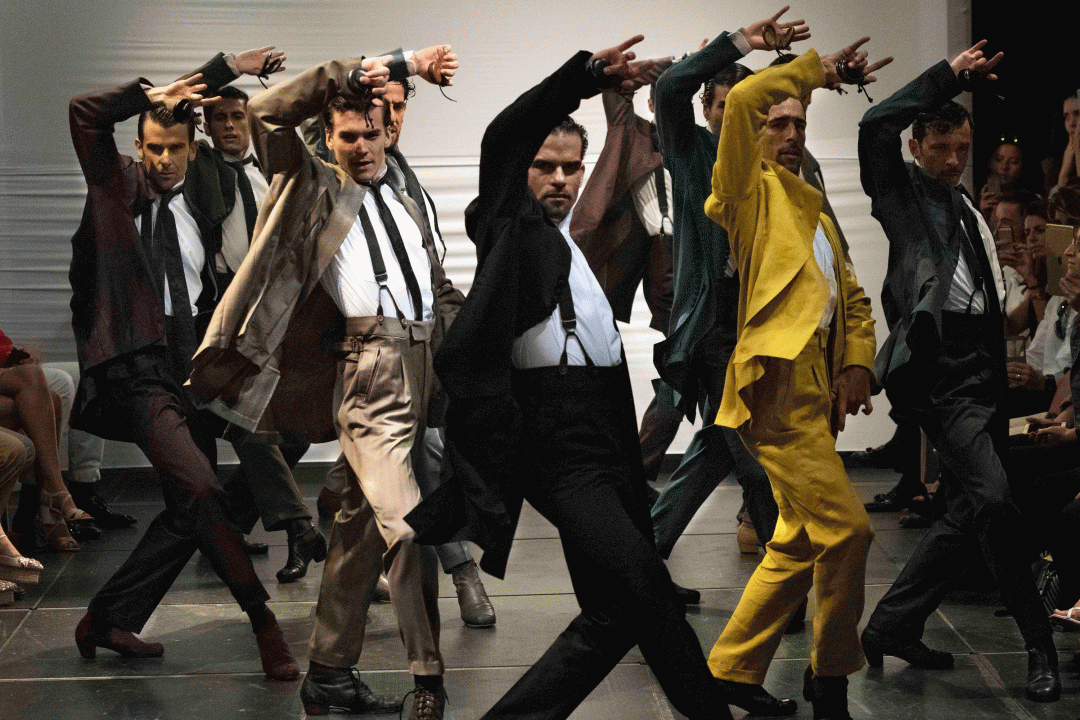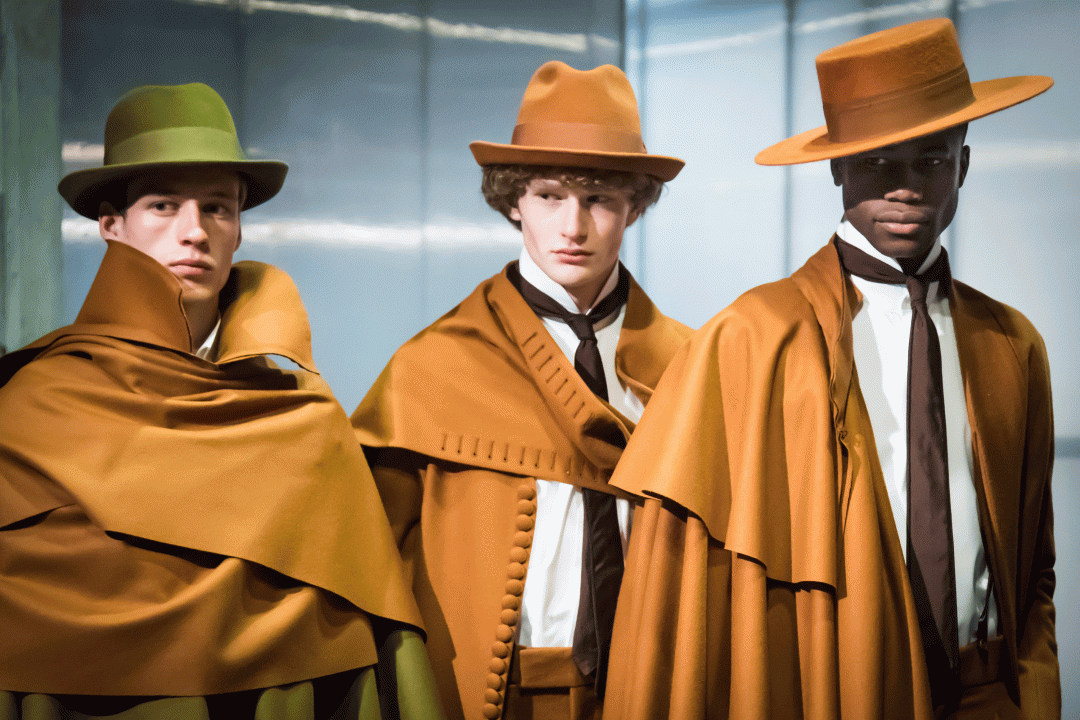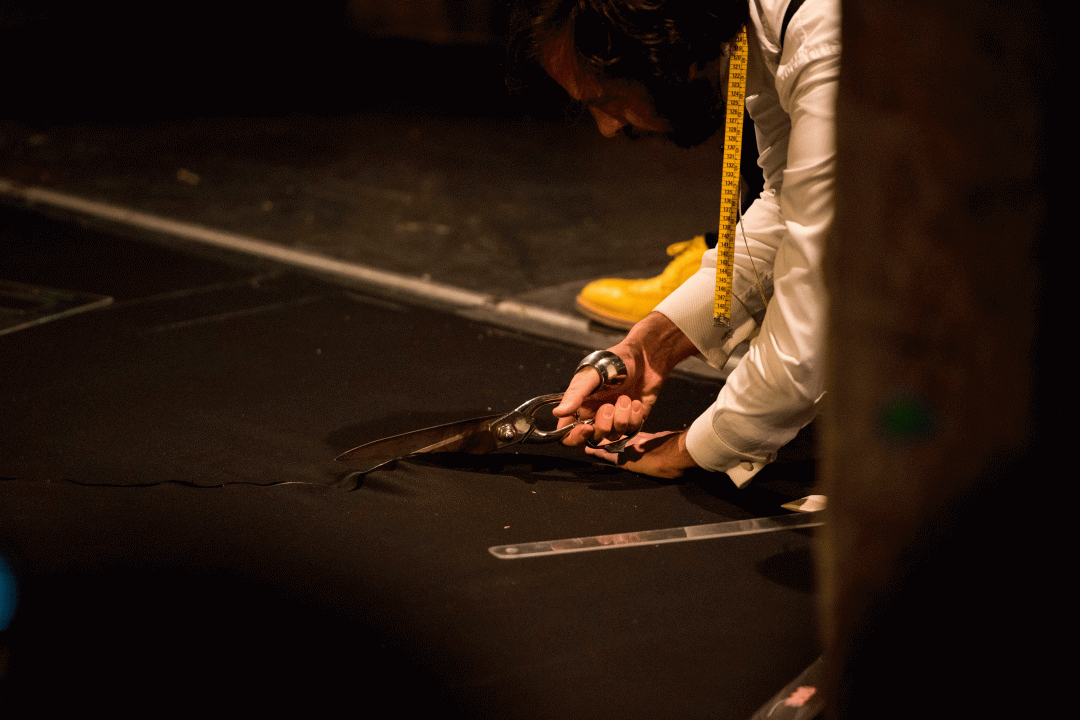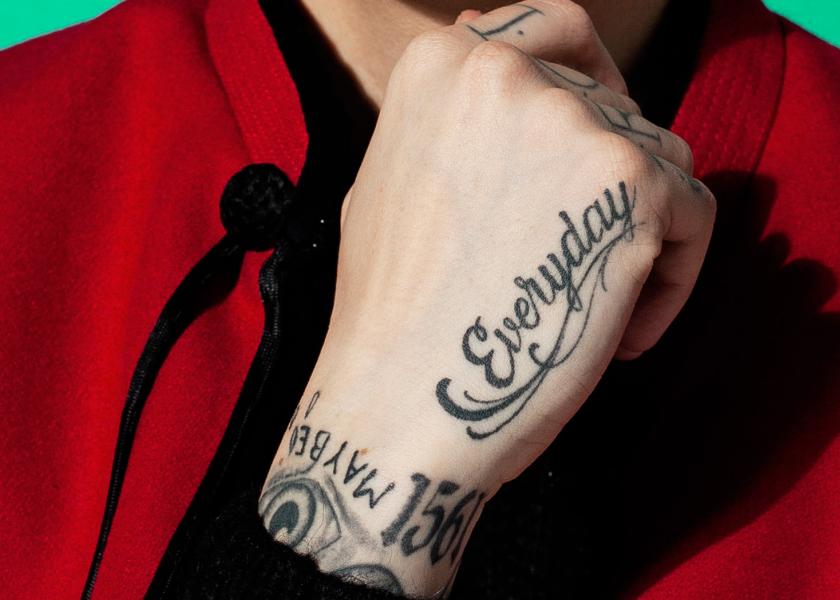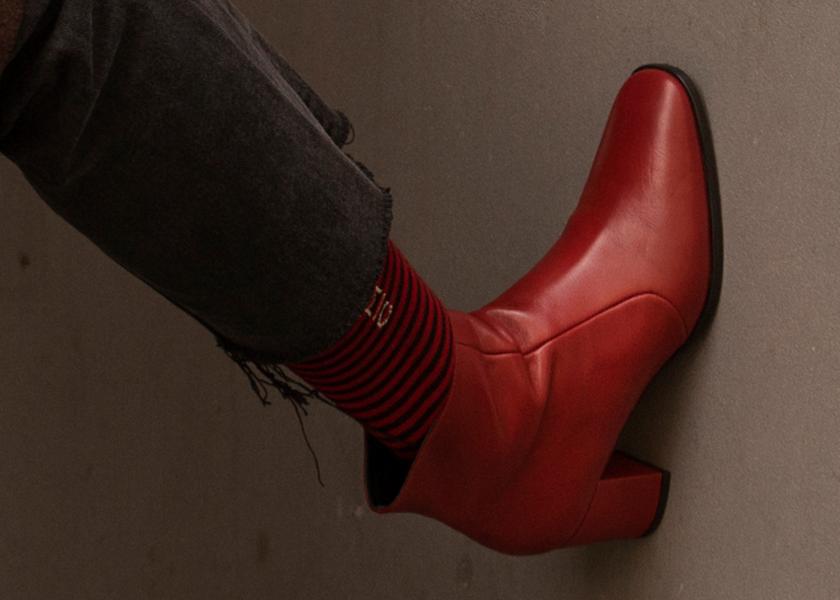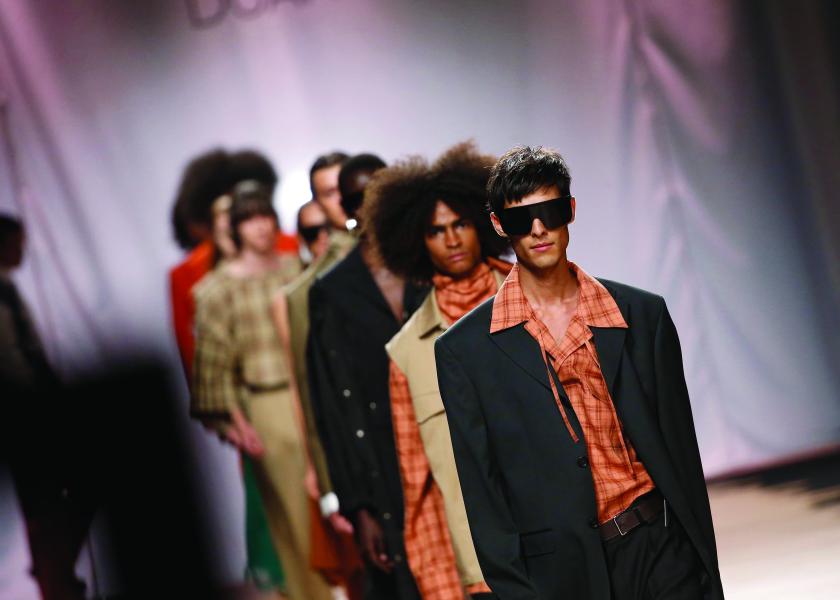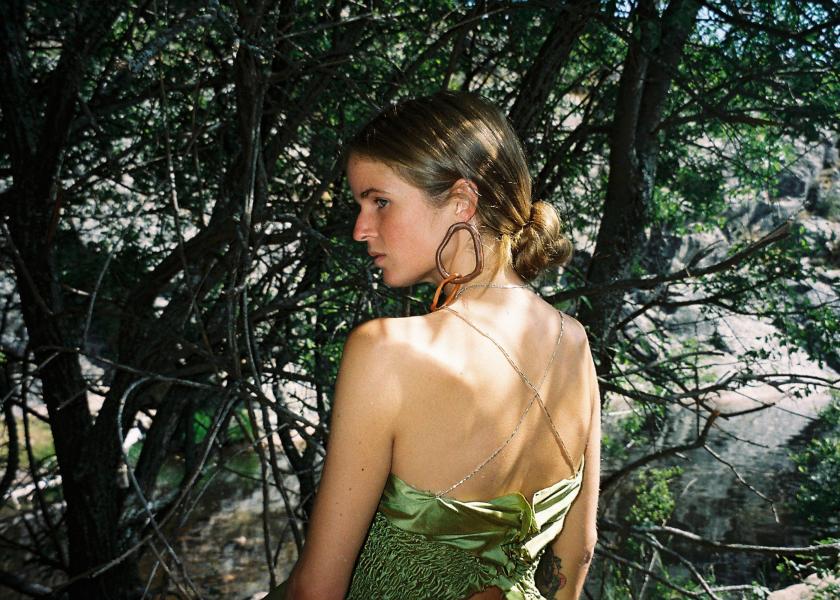Oteyza
Keepers of Spanish Tailoring
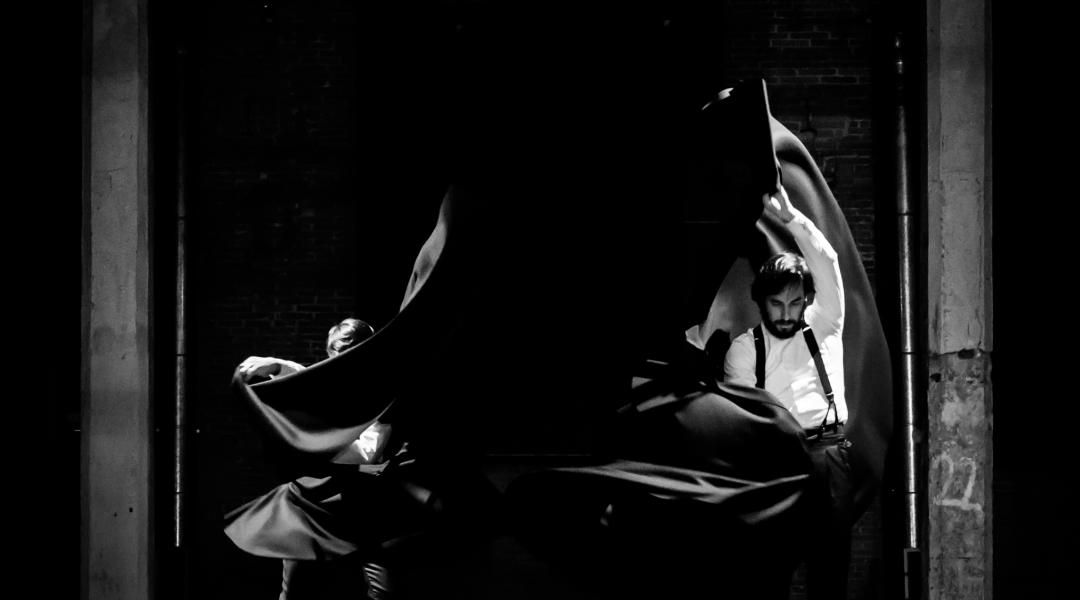
Oteyza reinvents men’s fashion with a strong Spanish flavour. The Cordovan hat and coat get a new life from an avant-garde point of view by a conscious and provocative tailor’s firm that wants to transgress the codes of international menswear.
During last January’s MBFWM, one name was on everybody’s tongue: Oteyza. Their presentation at the Teatro Español brought together an expectant, emotion-hungry crowd. Capes and Cordovan hats appeared on the scene, as part of the designs Paul García de Oteyza and Caterina Pañeda had prepared for the coming autumn, with a traditional Spanish flavour as well as a more avant-garde attitude.
Oteyza is a firm that is about identity rather than fashion, in which the established codes in men’s tailoring are only respected to be twisted to the point where, without being broken, they allow for the reinvention of the classic styles. “We started as a tailor’s shop eight years ago. Our goal was to relaunch classic patterns,” Paul explains. “Once we’d done that, we began the transgression, creating a favourable atmosphere for a progression that led us to what we now call ‘the new paradigm of men’s fashion’.”
Oteyza’s founding couple came from the world of translation and interpretation (she) and economy (he), but in both cases there was something stronger running through their veins that needed to come out: tailoring. “Caterina’s grandfather and great-grandfather were tailors, and her grandmother worked in a tailor’s shop. I’m an economist, but my father has always had something to do with Merino wool cloths. We’ve always had a link with this world one way or the other, not from a fashion point of view, but from a more conceptual approach, from craftsmanship, from a way of working that is more focused on luxury,” he explains.
As in any fashion and business project, there are always moments when things are complicated, and others when the fruits of a job well done can be collected. “Looking back, there have been many different stages, and they’ve all been important. In Spain, to establish yourself you have to go through all the stages, and that’s a good thing. We have valued each one, from our early days as a 40-square-meter tailor’s shop in the Chamberí neighbourhood to winning the National Fashion Award and opening the Pitti Immagine Uomo international fair twice [the most important men’s fashion fair in the world],” he says, before revealing the true secret to their success. “You can’t make the achievements we have in recent years without doing thorough and substantial work first, not only on a level of technique and process, but also when it comes to creating a business structure.”
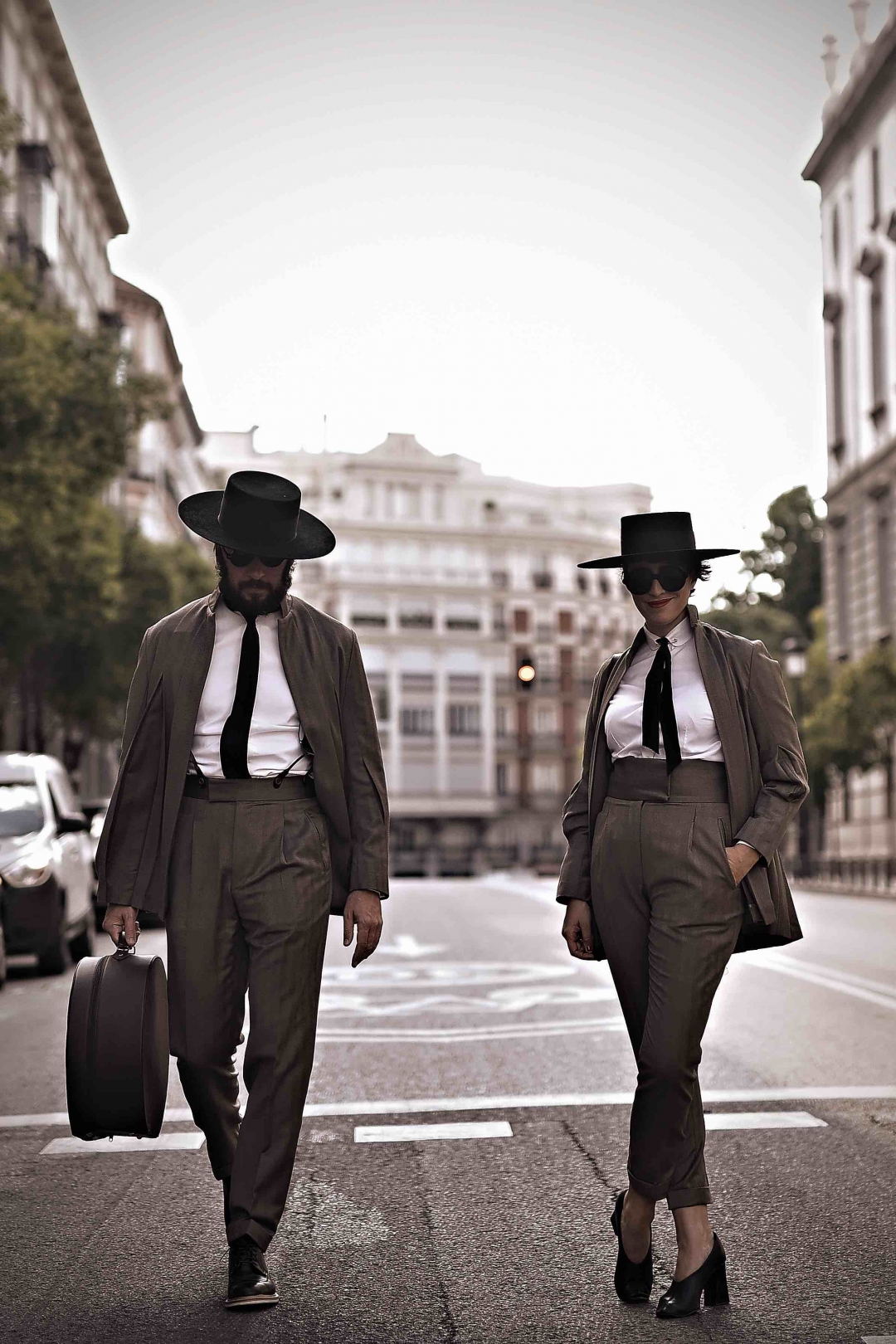
Juan de Alceaga, a 16th-century author of a treatise on geometry applied to the trade of tailoring, is one of their great references. ©The Storyalist
A global leader in tradition and innovation
Despite the great moment they are at in their career, Paul is modest and aware that the fashion thing is a marathon without a finish line. “You never get there completely, and that’s a good thing. Us being awarded the National Fashion Award for Innovative Entrepreneurship in 2018 is a step, but a very important one, since it means recognition on an institutional level and from the sector that goes beyond that, and it means that your own country is understanding the way you see fashion and interpret male elegance, and the risks that you are taking.”
On a commercial and promotional level, participating in Pitti Uomo, the men’s fashion fair in Florence, was one of the firm’s great successes. “It was an important global showcase for us and we were lucky that they regarded us highly enough to put us in the front line. The fair hosted us in the central pavilion as part of the new avant-garde of artisans, allowing us to open the official calendar twice with our collections with two presentations outside the pavilion, with that vibe that we like, of art, tradition and avant-garde,” he recalls.
And they delighted the international public with their commitment to exhibiting and reinterpreting the Spanish roots, which makes their tailor’s shop something totally different and fresh. “We’re inspired by everything Spanish, because you do what you feel, and our land, our origins, our memory are in our veins. We’re fortunate that Spain has been influenced by many civilisations that have left us with wonderful artistic and cultural examples to be inspired by and which you can feed off.”
At a time when men’s fashion looks at global Western culture, vindicating Spain’s history, its codes and its folklore was a risky thing to do, but also final and indisputably successful. “We’ve always understood fashion as culture, as art, with a deep background, without which we wouldn’t have been able to achieve this recognition and would’ve remained stuck in something more superfluous. We’re teachers of the History of men’s fashion, we always do extensive research on garments, and with that we create collections with coherence and background that the client understands,” he says before recalling the first time they presented their most iconic pieces. “When we introduced our Cordovan hats and capes, four years ago, when nobody was wearing them and they were more associated with regional or folkloric clothing, it was important to provide context. If you don’t give it that new air and explain it, it could look like a mere exhibitionist gesture.”
For him... and for her
They take pride in having a large male following, but also a large number of women find the firm’s pieces a new ally in search of sophistication, in times when the label ‘unisex’ is everywhere. They, more than anyone else, understand Oteyza's vision. “You can’t build a firm with fashion shows alone and no clients. Before we started doing fashion shows, we wanted to get to ‘know’ them better and, therefore, our product. Without having that close and direct relationship with our clientele, we didn’t feel able to move forward. Our range of clients is very varied, but they all look for new elements, although respecting the traditional, obviously. We continue to make more classic costumes, but we think we can take it a step further and guide the client in that regard,” he stresses.
Among the projects Paul and Caterina are currently considering is the possibility of doing a show in Paris, but their priority is focused on the commercial field, bringing their prêt-à-porter to new countries in Europe and beyond, in addition to carrying out a thorough organisation of online production and sale: “Little by little as always, carefully planning every step, but with great enthusiasm.”
